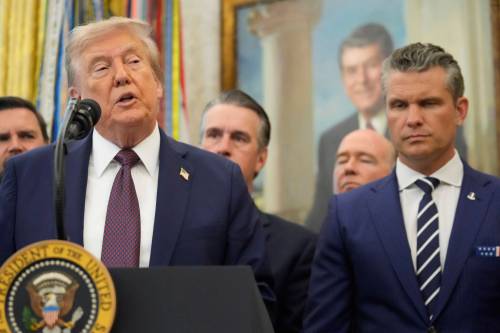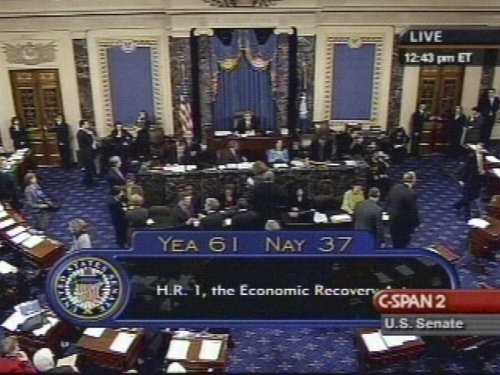Global Interdependence
Please review each article prior to use: grade-level applicability and curricular alignment might not be obvious from the headline alone.
Black-led non-profit developer gets federal funds for affordable housing units in north part of city
4 minute read Preview Monday, Oct. 20, 2025‘It’s our mission’: Inner-city church driven to help refugees
5 minute read Preview Monday, Sep. 29, 2025The devilish details that make no sense
4 minute read Preview Friday, Sep. 26, 2025Message to the U.S. ambassador: we’re disappointed, too
4 minute read Preview Wednesday, Sep. 24, 2025TikTok’s algorithm to be licensed to US joint venture led by Oracle and Silver Lake
6 minute read Preview Tuesday, Sep. 23, 2025Donald Trump and his Venezuelan gambit
5 minute read Preview Friday, Sep. 19, 2025North Korea comes in from the cold
5 minute read Thursday, Sep. 18, 2025Earlier this month, North Korea’s Kim Jong-Un flanked China’s President Xi Jinping on the red carpet at an epic military parade in Beijing. The supreme leader was feted as a guest of honour along with Vladimir Putin. Behind them in the pecking order were nearly two dozen heads of state — the leaders of regional powers Indonesia and Vietnam among them.
It was Kim’s first time at a major diplomatic event in his 14 years as leader. And it won’t be the last. Indeed, North Korea has asserted itself as a useful cog in the autocratic faction within the new multipolar global order.
Beijing for a long time was the sole ally propping up the Kim dynasty’s totalitarian dictatorship — if only because its collapse would burden China with millions of unwanted refugees. China thus provides its heavily sanctioned neighbour with vital energy and food supplies. Plus, China’s lone mutual defence treaty is with North Korea, signed in 1961.
The relationship has nonetheless been strained over the decades. Mainly, by Pyongyang’s habit of doling out rash threats of nuclear annihilation against the United States and its allies. This irritates Chinese leaders by bringing unwanted attention to what Beijing perceives as its geographic sphere of influence.
Winnipeg vigil for Kirk draws 2,000 mourners
3 minute read Preview Tuesday, Sep. 16, 2025Qatar and Poland — one is the bigger story
5 minute read Preview Monday, Sep. 15, 2025Widespread availability of graphic Charlie Kirk shooting video shows content moderation challenges
6 minute read Preview Sunday, Sep. 21, 2025Kinew stands by cabinet minister dogged by controversy
5 minute read Preview Friday, Sep. 12, 2025Bewildered and ‘in horror,’ Toronto man fights fake news that he shot U.S. influencer Charlie Kirk
4 minute read Preview Friday, Sep. 19, 2025AI could help manufacturers offset tariff costs, depending on implementation: experts
5 minute read Preview Monday, Sep. 22, 2025Trump celebrates West Point alumni group canceling award ceremony to honor Tom Hanks
5 minute read Preview Monday, Sep. 15, 2025Australian woman sentenced to life in prison for mushroom poisonings
5 minute read Preview Friday, Oct. 3, 2025Churchill and LNG would mix like oil and water
5 minute read Tuesday, Sep. 9, 2025Churchill has always been a place of connection and of change. However, last week’s remarks from Prime Minister Mark Carney that Churchill could become a year-round export terminal for liquefied natural gas (LNG) suggest a risky vision for the future that could imperil the balance and diversity that has allowed this unusual community on Hudson Bay to endure.
At its founding, Churchill connected Inuit, Dene and Cree communities with the Hudson Bay Company’s vast trading network. In the waning days of the fur trade, Churchill re-emerged as an important cold war base, housing thousands of troops.
When North America’s defence needs changed, Churchill again reinvented itself as a research hub for aerospace and a broad array of scientific enquiry. Through the second half of the 20th century, Churchill also became a critical social service centre for much of Hudson Bay and the central Arctic. Now it has emerged as one of Canada’s great ecotourism destinations. Few places better capture the adaptability and resilience of the North.
The prime minister and Premier Wab Kinew have both described Churchill LNG exports as a “nation-building” project. Investment in the transportation corridor that connects the Arctic to southern Canada through the port and railroad is indeed overdue. The Port of Churchill is a national asset with enormous potential and diverse strengths.






















